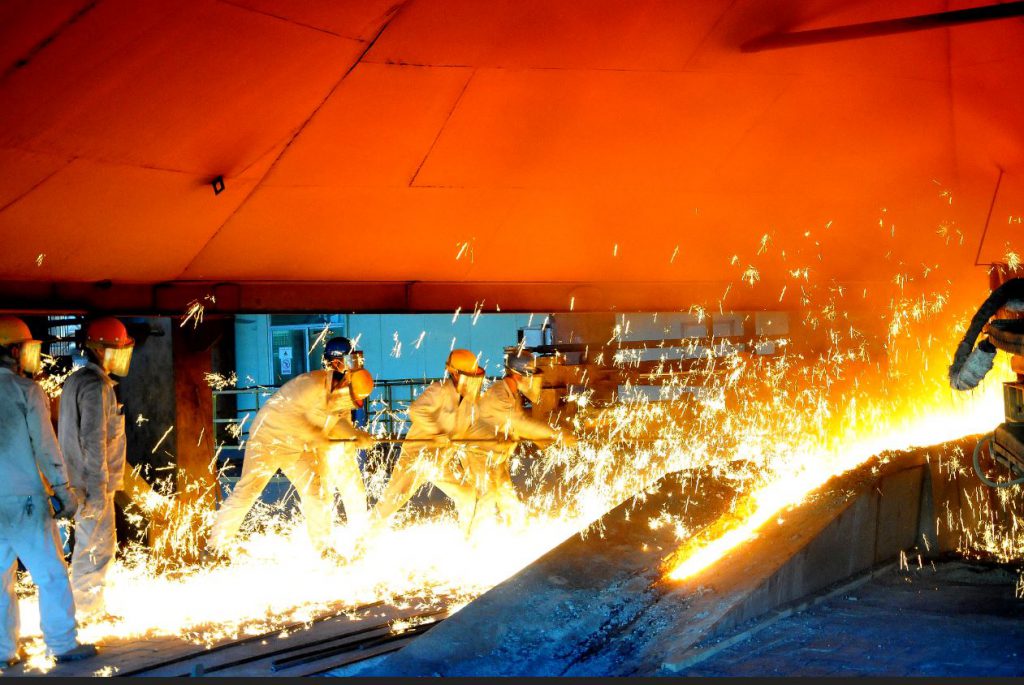
(The opinions expressed here are those of Andy Home, a columnist for Reuters.)
The United States government should invest in nickel refining capacity in coordination with its allies, according to the Biden Administration’s 100-day review of critical supply chains.
“If there are opportunities for the U.S. to target one part of the battery supply chain, this would likely be the most critical to provide short- and medium-term supply chain stability,” the report said.
It’s an unexpected priority. Nickel isn’t on the U.S. list of critical minerals. Although the country depends on imports, 68% of supplies come from what the report calls “allied nations” such as Canada, Australia, Norway and Finland.
But the Department of Energy (DOE) has identified Class 1 nickel, the type best suited to lithium-ion batteries, as both key vulnerability and key opportunity.
The emphasis on nickel doesn’t mean the White House is complacent about other critical battery materials such as lithium and cobalt but it says a lot about how the administration is thinking about the problem.
The United States is import-dependent across the spectrum of battery metals with large parts of the supply chain captured by China, a problematic international trading partner.
However, the nature of the dependency differs by mineral, starting in the ground.
The United States, for example, “has lithium resources and domestic corporations well-versed in recovery and refinement globally”, according to the report.
There is no domestic nickel processing capacity outside a limited amount of by-product salt production
The ambition, therefore, is to stimulate more domestic mining and, even more importantly, domestic processing through a potential mix of purchasing guarantees, federal funding and research and development into enhanced recovery technology.
China’s investment in this section of the supply chain “has made them the world’s leader despite limited domestic lithium supply”, the report notes.
When it comes to nickel, however, the only active U.S. mine – Eagle in Michigan – is due to retire in 2025 and domestic deposits are small and low grade.
There is no domestic nickel processing capacity outside a limited amount of by-product salt production.
Yet this particular battery metal is the one likely to experience the most significant demand increase over the coming years, the report says, with “market indications that there could be a large shortage of Class 1 nickel in the next 3-7 years”.
Indeed, with nickel content rising in battery cathode design, not having enough of the right kind of nickel “poses a supply chain risk for battery manufacturing globally, not just in the United States”.
Nickel demand is rising because automakers are trying to reduce their usage of cobalt, a metal that is overshadowed by a supply-chain reliance on the Democratic Republic of Congo (DRC) and its artisanal workforce.
The Department of Energy wants to help them with a commitment to “a multi-year initiative to address the scientific and engineering issues with reducing and eliminating the cobalt in EV batteries”.
Research is already taking place into new materials such as silicon and lithium metal anodes with progress to date “very good”, the report says.
The motivation is the same as that of Tesla or Volkswagen. Changing the demand dynamic is the surest long-term way of resolving cobalt’s cost and supply problems.
The DOE awarded cobalt the “lowest ‘quality’ supply chain score of all elements, largely due to the alleged mining conditions in the Democratic Republic of Congo and conditions surrounding cobalt refining in China”.
But with most of the world’s known cobalt reserves in the Congo, there’s an acceptance that short-term risks can only be partly mitigated through a combination of maximising domestic resources, particularly old tailings, and working with allied countries.
The report recommends using the U.S. Development Finance Corporation (DFC) to “identify projects in allied and partner nations that can be funded to create new sustainable mining and processing operations for lithium, graphite, and other key metals and materials”.
Also critical to reducing critical minerals dependence will be building recycling capacity, according to the DOE.
Battery recycling could meet up to 30% of nickel and 80% of cobalt usage in electric vehicles by the end of the decade but there are multiple hurdles in getting there.
It will require a national recycling policy to align a sector that is currently fragmented by state legislation. Without one batteries will go to landfill or be exported to other countries where the metals will be extracted.
It will also need more research and development on how to recycle electric vehicle batteries because it’s currently unprofitable in many cases and is becoming more chemically difficult as battery ingredients multiply.
Ideally, it should take place in tandem with a build-out of other parts of the battery supply chain such as cell and pack manufacture, allowing “new” scrap to be continuously looped back into the production process.
The report recommends the United States should form a cross-agency task force to “capture a holistic view of the opportunity landscape and to coordinate action to support domestic recycling”.
Despite the long list of challenges, the DOE concludes that recycled material can “buffer volume and price instabilities” in the short term and, as ever more EV batteries reach end-of-life, “could eventually supply a significant share of critical battery material needs”.
Recycling will likely help close the U.S. dependency gap faster in cobalt than it will in nickel.
This is because the current recyclables stream is largely made up of consumer electronics and first-generation EVs, neither of which contain much nickel.
The world is going to need a lot more new nickel before recycling can make a real impact.
There is a nickel mining and processing boom underway in Indonesia but rather than offering any comfort to the United States, the dominance of Chinese players simply means the country risks “falling further behind China in this critical mineral”.
As such, “there is urgency to developing a strategy around Class 1 nickel”, the report concludes.
Starting with a U.S.-funded nickel processing plant.
(Editing by Emelia Sithole-Matarise)
Comments